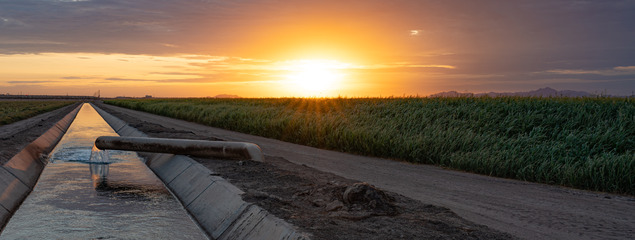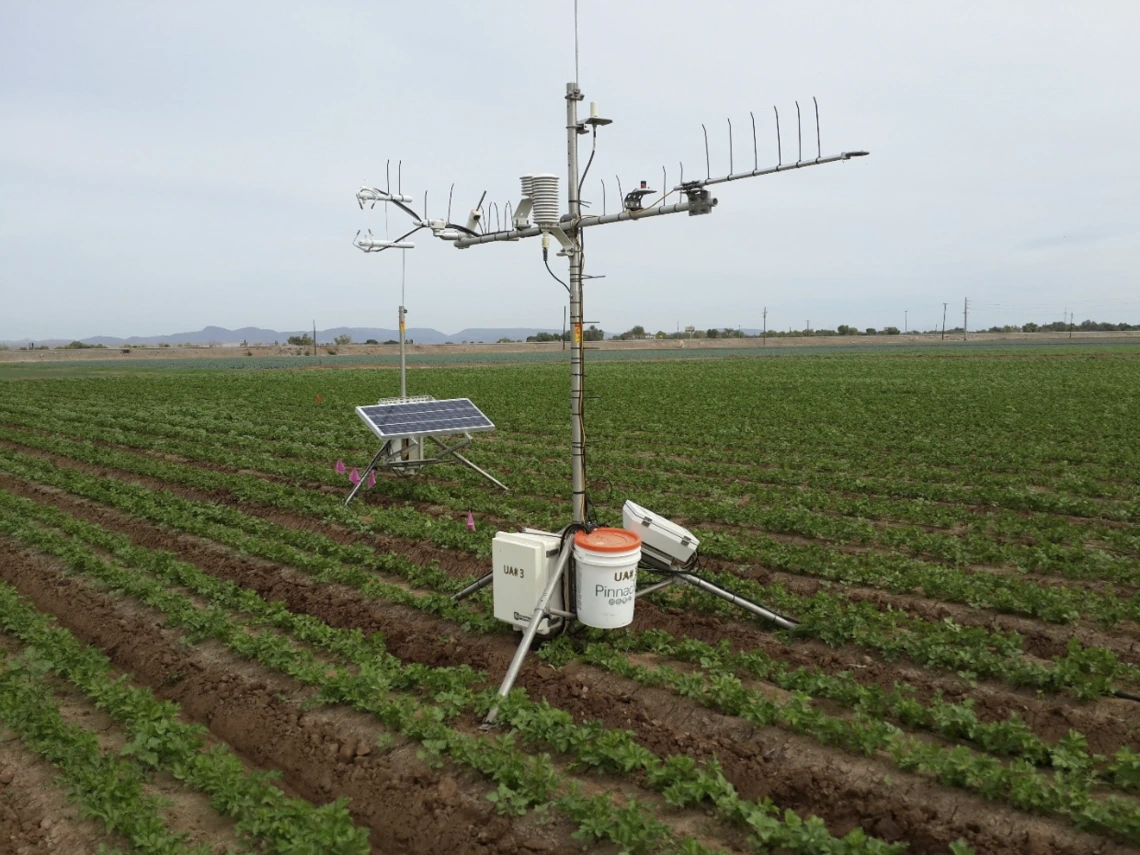
Increasing Irrigation Efficiency
Water Use and Management Research
Updated Crop Evapotranspiration (ET) & Salinity Management
Celery
Celery is a crop of increasing importance in the lower Colorado River region near Yuma due to a loss of agricultural land around the central coast of California to urbanization. However, acreage remains small relative to lettuce, broccoli, cauliflower, and spinach. In 2022, approximately 1780 acres of celery were produced in Arizona.
All celery is produced from transplants and stands are established by sprinklers or furrow water during planting. Most of the celery acreage is irrigated by furrow water after stand establishment while a smaller acreage is irrigated by buried drip. Using eddy covariance (Figure 1), measured seasonal ETc ranges from 356 to 496 mm (14 to 19.3 acre-inches). Like the other cool season crops, days from first irrigation to harvest vary, growth and water use are more accurately tracked using growing degree days and satellite imagery. The calculated crop coefficients by growing period are shown in Table 1.
Seasonal irrigation applications for furrow-irrigated celery are lower (64%) than the other cool season crops. This is due to the frequent furrow irrigation during the early part of the season to evade stress on initially shallow transplanted roots. Nevertheless, due to high irrigation application efficiencies (84%) during the second half of the season, salt increases in the root zone by harvest. It is a widespread practice to restore salt balance in the pre-irrigation off-season.
Table 1
Cauliflower heat units, NDVI, and Kc values classified by FAO-56 growth stages.
| Stage | GDD (C-Day) | GDD (F-Day) | NDVI | Kc |
|---|---|---|---|---|
| INI | 0.128 | 1.01 | ||
| INI/DEV | 235.6 | 456.1 | 0.167 | |
| DEV/MID | 1071.6 | 1960.9 | 0.863 | 1.27 |
| MID/END | 1507.8 | 2746.0 | 0.863 | |
| END | 1665.3 | 3029.5 | 0.515 |
GDD based on minimum and maximum thresholds of 5 C (41 F) and 30 C (86 F), respectively.

Figure 1
Eddy covariance system in a celery field within the Yuma County Water Users Association.

Figure 2
Increase in surface soil over celery production cycle in Yuma County Water Users Association.

